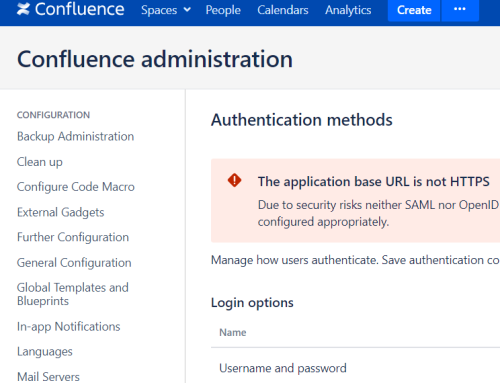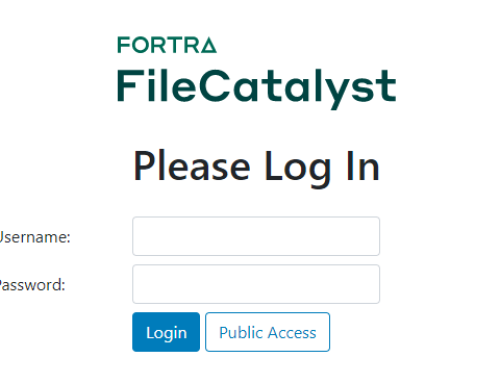This article provides a technical analysis of CVE-2024-31497, a vulnerability in PuTTY discovered by Fabian Bäumer and Marcus Brinkmann of the Ruhr University Bochum.
PuTTY, a popular Windows SSH client, contains a flaw in its P-521 ECDSA implementation. This vulnerability is known to affect versions 0.68 through 0.80, which span the last 7 years. This potentially affects anyone who has used a P-521 ECDSA SSH key with an affected version, regardless of whether the ECDSA key was generated by PuTTY or another application. Other applications that utilise PuTTY for SSH or other purposes, such as FileZilla, are also affected.
An attacker who compromises an SSH server may be able to leverage this vulnerability to compromise the user’s private key. Attackers may also be able to compromise the SSH private keys of anyone who used git+ssh with commit signing and a P-521 SSH key, simply by collecting public commit signatures.
Background
Elliptic Curve Digital Signature Algorithm (ECDSA) is a cryptographic signing algorithm. It fulfils a similar role to RSA for message signing – an ECDSA public and private key pair are generated, and signatures generated with the private key can be validated using the public key. ECDSA can operate over a number of different elliptic curves, with common examples being P-256, P-384, and P-521. The numbers represent the size of the prime field in bits, with the security level (i.e. the comparable key size for a symmetric cipher) being roughly half of that number, e.g. P-256 offers roughly a 128-bit security level. This is a significant improvement over RSA, where the key size grows nonlinearly and a 3072-bit key is needed to achieve a 128-bit security level, making it much more expensive to compute. As such, RSA is largely being phased out in favour of EC signature algorithms such as ECDSA and EdDSA/Ed25519.
In the SSH protocol, ECDSA may be used to authenticate users. The server stores the user’s ECDSA public key in the known users file, and the client signs a message with the user’s private key in order to prove the user’s identity to that server. In a well-implemented system, a malicious server cannot use this signed message to compromise the user’s credentials.
Vulnerability Details
ECDSA signatures are (normally) non-deterministic and rely on a secure random number, referred to as a nonce (“number used once”) or the variable k in the mathematical description of ECDSA, which must be generated for each new signature. The same nonce must never be used twice with the same ECDSA key for different messages, and every single bit of the nonce must be completely unpredictable. An unfortunate property of ECDSA is that the private key can be compromised if a nonce is reused with the same key and a different message, or if the nonce generation is predictable.
Ordinarily the nonce is generated with a cryptographically secure pseudorandom number generator (CSPRNG). However, PuTTY’s implementation of DSA dates back to September 2001, around a month before Windows XP was released. Windows 95 and 98 did not provide a CSPRNG and there was no reliable way to generate cryptographically secure numbers on those operating systems. The PuTTY developers did not trust any of the available options, recognising that a weak CSPRNG would not be sufficient due to DSA’s strong reliance on the security of the random number generator. In response they chose to implement an alternative nonce generation scheme. Instead of generating a random number, their scheme utilised SHA512 to generate a 512-bit number based on the private key and the message.
The code comes with the following comment:
* [...] we must be pretty careful about how we * generate our k. Since this code runs on Windows, with no * particularly good system entropy sources, we can't trust our * RNG itself to produce properly unpredictable data. Hence, we * use a totally different scheme instead. * * What we do is to take a SHA-512 (_big_) hash of the private * key x, and then feed this into another SHA-512 hash that * also includes the message hash being signed. That is: * * proto_k = SHA512 ( SHA512(x) || SHA160(message) ) * * This number is 512 bits long, so reducing it mod q won't be * noticeably non-uniform. So * * k = proto_k mod q * * This has the interesting property that it's _deterministic_: * signing the same hash twice with the same key yields the * same signature. * * Despite this determinism, it's still not predictable to an * attacker, because in order to repeat the SHA-512 * construction that created it, the attacker would have to * know the private key value x - and by assumption he doesn't, * because if he knew that he wouldn't be attacking k!
This is a clever trick in principle: since the attacker doesn’t know the private key, it isn’t possible to predict the output of SHA512 even if the message is known ahead of time, and thus the generated number is unpredictable. Since SHA512 is a cryptographically secure hash, it is computationally infeasible to guess any bit of its output until you compute the hash. When the PuTTY developers implemented ECDSA, they re-used this DSA implementation, resulting in a somewhat odd deterministic implementation of ECDSA where signing the same message twice results in the same nonce and signature. This is certainly unusual, but it does not count as nonce reuse in a compromising sense – you’re essentially just redoing the same maths and getting the same result.
Unfortunately, when the PuTTY developers repurposed this DSA implementation for ECDSA in 2017, they made an oversight. Prior usage for DSA did not utilise keys larger than 512 bits, but P-521 in ECDSA needs 521 bits. Recall that ECDSA is only secure when every single bit of the key is unpredictable. In PuTTY’s implementation, though, they only generate 512 bits of random nonce using SHA512, leaving the remaining 9 bits as zero. This results in a nonce bias that can be exploited to compromise the private key. If an attacker has access to the public key and around 60 different signatures they can recover the private key. A detailed description of this key recovery attack can be found in this cryptopals writeup.
Had the PuTTY developers extended their solution to fill all 521 bits of the key, e.g. with one additional hash function call to fill the last 9 bits, their deterministic nonce generation scheme would have remained secure. Given the constraint of not having access to a CSPRNG, it is actually a clever solution to the problem. RFC6979 was later released as a standard method for implementing deterministic ECDSA signatures, but this was not implemented by PuTTY as their implementation predated that RFC.
Windows XP, released a few months after PuTTY wrote their DSA implementation, introduced a CSPRNG API, CryptGenRandom, which can be used for standard non-deterministic implementations of ECDSA. While one could postulate that the PuTTY developers might have used this API had they written their DSA implementation just a few months later, the developers have made several statements about their distrust in Windows’ random number generator APIs of that era and their preference for deterministic implementations. This distrust may have been founded at the time, but such concerns are certainly unfounded on modern versions of Windows.
Impact
This vulnerability exists specifically in the P-521 ECDSA signature generation code in PuTTY, so it only affects P-521 and not other curves such as P-256 and P-384. However, since it is the signature generation which is affected, any P-521 key that was used with a vulnerable version of PuTTY may be compromised regardless of whether that key was generated by PuTTY or something else. It is the signature generation that is vulnerable, not the key generation. Other implementations of P-521 in SSH or other protocols are not affected; this vulnerability is specific to PuTTY.
An attacker cannot leverage this vulnerability by passively sniffing SSH traffic on the network. The SSH protocol first creates a secure tunnel to the server, in a similar manner to connecting to a HTTPS server, authenticating the server by checking the server key fingerprint against the cached fingerprint. The server then prompts the client for authentication, which is sent through this secure tunnel. As such, the ECDSA signatures are encrypted before transmission in this context, so an attacker cannot get access to the signatures needed for this attack through passive network sniffing.
However, an attacker who performs an active man-in-the-middle attack (e.g. via DNS spoofing) to redirect the user to a malicious SSH server would be able to capture signatures in order to exploit this vulnerability if the user ignores the SSH key fingerprint change warning. Alternatively, an attacker who compromised an SSH server could also use it to capture signatures to exploit this vulnerability, then recover the user’s private key in order to compromise other systems. This also applies to other applications (e.g. FileZilla, WinSCP, TortoiseGit, TortoiseSVN) which leverage PuTTY for SSH functionality.
A more concerning issue is the use of PuTTY for git+ssh, which is a way of interacting with a git repository over SSH. PuTTY is commonly used as an SSH client by development tools that support git+ssh. Users can digitally sign git commits with their SSH key, and these signatures are published alongside the commit as a way of authenticating that the commit was made by that user. These commit logs are publicly available on the internet, alongside the user’s public key, so an attacker could search for git repositories with P-521 ECDSA commit signatures. If those signatures were generated by a vulnerable version of PuTTY, the user’s private key could be compromised and used to compromise the server or make fraudulent signed commits under that user’s identity.
Fortunately, users who use P-521 ECDSA SSH keys, git+ssh via PuTTY, and commit signing represent a very small fraction of the population. However, due to the law of large numbers, there are bound to be a few out there who end up being vulnerable to this attack. In addition, informal observations suggest that users may be more likely to select P-521 when offered a choice of P-256, P-384, or P-521, likely due to the perception that the larger key size offers more security. Somewhat ironically, P-521 ended up being the only curve implementation in PuTTY that was insecure.
Remediation
The PuTTY developers have resolved this issue by reimplementing the deterministic nonce generation using the approach described in the RFC6979 standard.
Any P-521 keys that have ever been used with any of the following software should be treated as compromised:
- PuTTY 0.68 – 0.80
- FileZilla 3.24.1 – 3.66.5
- WinSCP 5.9.5 – 6.3.2
- TortoiseGit 2.4.0.2 – 2.15.0
- TortoiseSVN 1.10.0 – 1.14.6
Users should update their software to the latest version.
If a P-521 key has ever been used for git commit signing with development tools on Windows, it is advisable to assume that the key may be compromised and change it immediately.
References
- https://www.chiark.greenend.org.uk/~sgtatham/putty/wishlist/vuln-p521-bias.html
- https://www.openwall.com/lists/oss-security/2024/04/15/6
- https://git.tartarus.org/?p=simon/putty.git;a=commitdiff;h=c193fe9848f50a88a4089aac647fecc31ae96d27
- https://cve.mitre.org/cgi-bin/cvename.cgi?name=CVE-2024-31497
- https://cryptopals.com/sets/8/challenges/62.txt




